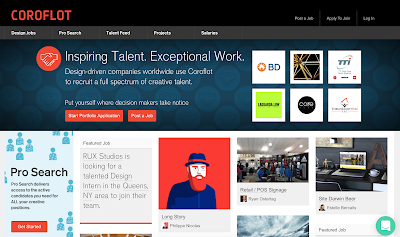As a UX UI designer, a competitive and responsive online portfolio website can be particularly important for you to fully show off your design talents and attract the attention of more employers, recruiters and clients. However, there are tons of online portfolio websites that claim to help create unique and professional online portfolios in the market, and you just don’t know which one of them would be the best choice?
Here are 5 best free online portfolio sites for you to create perfect UX UI design portfolios:
1. Behance (wow! its Free)
As one of the most widely-used free online portfolio websites in the designer communities, Behance not only attracts millions of UX UI designers, artists and photographers around the world to continuously upload their excellent design works for building cool personal design portfolios each year, but also appeals to many interviewers, recruiters and hiring managers for browsing these designer portfolios and looking for new talents. So, in this aspect, Behance is definitely one of the must-have online portfolio websites for you to display your designs and get hired.
2. Dribbble (its Free!)
Like Behance, Dribbble is also another popular free online portfolio website among UX UI designers. You can easily create a free account and share small screenshots of your designing processes, design drafts, interactive prototypes, app design concepts, and more designs. Dribbble is also a good platform for designers to display new design works, improve design skills, share and communicate design ideas.
3. Coroflot
 Coroflot is also a good worldwide online portfolio website for UX UI designers though it is not as powerful and famous as Behance and Dribbble. With over 2 million images for over 150,000 creatives published from different designers, artists and photographers every month, Coroflot becomes one of the most professional online portfolio sites.
Coroflot is also a good worldwide online portfolio website for UX UI designers though it is not as powerful and famous as Behance and Dribbble. With over 2 million images for over 150,000 creatives published from different designers, artists and photographers every month, Coroflot becomes one of the most professional online portfolio sites.
4. Adobe Portfolio (Free)
As one of the free tools included in paid Adobe Creative Cloud plans, Adobe Portfolio enables designers to quickly create beautiful and high-quality personal portfolio sites in minutes. It also offers users a free Creative Cloud subscription service. And since Adobe is one of the sponsors of Behance, Adobe Portfolio allows designers to sync design updates to Behance for free.
5. Carbonmade (Offer free account)
 Carbonmade is an easy-to-use and hassle-free online portfolio site. It offers beautiful visual-based themes and unique domain name services.
Carbonmade is an easy-to-use and hassle-free online portfolio site. It offers beautiful visual-based themes and unique domain name services.
And, as a tool originally used to make life easier for designer fellows, Carbonmade is much better for UX UI designers who want to meet more talented designers, share design works and communicate with them there. Moreover, it also features for its simple and easy-to-use interface.
Above all are the best free online portfolio websites for you to create perfect UX UI portfolios on the web. And in order to increase the chances of getting noticed by potential clients and recruiters, you’d better also use and create two or more portfolio sites with different styles and characters together.
Do not forget to add these portfolio links in your resume so that interviewers, recruiters and hiring managers can easily access and know your UX UI design skills. Hope you will choose the most suitable online portfolio site to create a beautiful and unique UX UI design portfolio online.
All the best.



Comments
Post a Comment